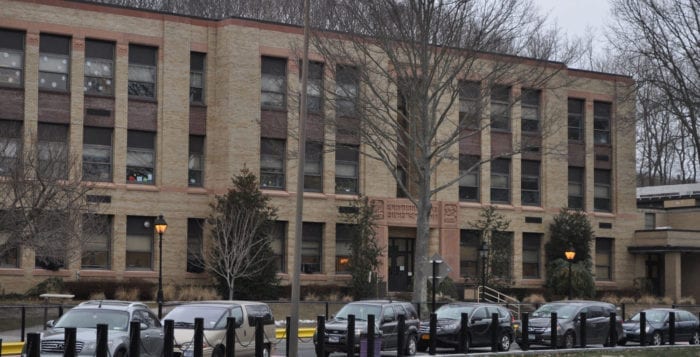By Alex Petroski
After months of passionate and at times heated debate, the Port Jefferson School District community has spoken.
Residents voted overwhelmingly against a $30 million capital bond proposal that carried an additional $10 million in interest over its 15-year life and included over 20 districtwide repair and upgrade projects. The issue garnered feverish local attention at numerous school board meetings and on social media forums since it was presented to the public by the district and board of education in September, driving more than 1,700 voters to the polls on referendum day Dec. 5. After all was said and done, 1,355 residents voted against the bond, with just 374 voting in favor of it. By comparison, just 412 people voted on the 2018 budget and school board vacancies back in May.

The proposal featured a three-story addition to a wing of the high school, additional classrooms at the high school and elementary school, a turf football field at the high school and lights for the Scraggy Hill Road athletic fields, among many more improvements. Some of the fixes — like additional girls locker room space and handicapped parking spaces at the high school track — were included to get the district in compliance with Title IX and the Americans with Disabilities Act and will likely need to be addressed either using the district’s capital reserves or a reworked bond proposal.
“While I am disappointed in the result, I am encouraged that so many residents took the time to vote,” district Superintendent Paul Casciano said in an email. “The district and our board of education will discuss the matter further at subsequent meetings. The safety, security and compliance concerns that we were attempting to address through the projects in the capital bond still exist and need attention.”
Many of those opposed to the bond pointed to the uncertainty surrounding an ongoing district and Port Jefferson Village lawsuit against Long Island Power Authority, as both entities stand to potentially lose substantial tax revenue in the coming years should a settlement or decision in the LIPA case be reached. LIPA has contended it pays too much in property taxes to operate the Port Jefferson Power Station, now that sweeping energy-efficiency upgrades have drastically reduced the regular need for the plant. The district and village’s annual operating budgets are funded in large part due to that revenue. Others were also opposed to the “all or nothing” proposal, which included upgrades that were seen as imminently necessary alongside projects that were viewed as extravagant, like the stadium lights at the Scraggy Hill fields and a new synthetic playing surface for the varsity football field.
“I think the result demonstrates that the community is seeking more transparency and fiscal responsibility from the board and the administration,” said Rene Tidwell, a district resident who was vocal in her opposition to the proposal. “We as a community are eager to roll up our sleeves and help identify urgent projects to fix compliance issues and to help prioritize long-term projects.”
Tidwell said she was not previously as engaged in the goings on of the board of education prior to the emergence of the debate over the bond.
“There had been talk in the community about it and when I started looking closely at the information the board provided I ended up having more questions,” she said. “Many in the community felt there wasn’t a consistent resource or outreach to the entire community with respect to contributing input for what went into the bond proposal.”
Depending on the assessed value of a district resident’s home, the bond would have resulted in an increase of between $289 and $1,185 annually in property taxes, according to the district.
Port Jefferson Village Mayor Margot Garant publicly requested that the district hold off on bringing the proposal forward in September until a resolution was reached on the LIPA issue.
“Tonight’s heavy turnout and result reflects the engagement and passion of our community,” Garant said Dec. 5 via email. “They spoke to the board of education with resounding voices of concern over this bond proposal and while doing so, expressed their deep concern for the children in our school district, clearly stating their support for the ‘needs,’ and not the ‘wants’ in the proposal.”



































